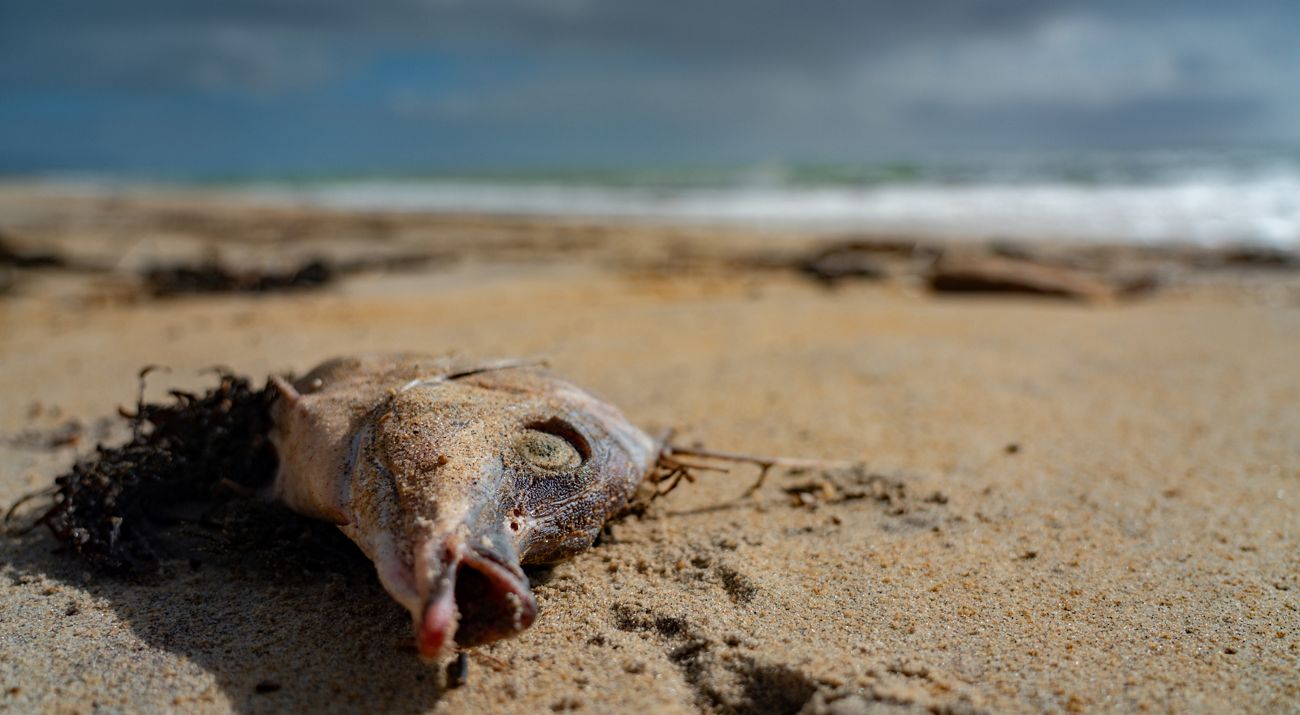Science has the solution to end algal blooms
Humble oyster key to address ocean crisis

Media Contacts
-
Ally Catterick
Director, Marketing & Communications
The Nature Conservancy Australia
Mobile: 0407 501 132
Email: ally.catterick@tnc.org
Conservation scientists from The Nature Conservancy (TNC) Australia say large-scale shellfish reef restoration can turn the tide on the toxic algal bloom devastating South Australia – and help prevent future marine disasters nationwide. As Dr Michaela Dommisse, TNC Australia’s Director of Oceans, says this is an unprecedented natural disaster, the likes of which will become more frequent.
“Communities are hurting and demanding answers. We have one: reef restoration. It’s proven, it’s working, and it starts with the humble oyster, the water filters or kidneys of the sea.”
This week, the South Australian and Federal Governments announced the Algal Bloom Summer Plan – a joint initiative to address the social, economic and environmental fallout of the bloom.
Within the plan, $20.6 million has been committed to nature-based solutions with around half allocated to large-scale shellfish reef restoration.
“While this is an encouraging and essential first step, to rebuild these natural filtration systems at the scale needed to address this crisis – and mitigate future disasters – far greater investment is required,” Dr Dommisse said.
Australia once hosted vast shellfish reef ecosystems, primarily built by native oysters and mussels, that spanned the southern coastline for tens of thousands of years. Over the last century, 99% of these ecosystems have been destroyed by dredging and overharvest, leaving our coasts exposed to biodiversity loss and environmental shocks, like the algal bloom.
“Large-scale shellfish reef restoration is essential infrastructure,” Dr Dommisse said.
“We must scale up national and state restoration programs, starting in South Australia. Community volunteer efforts are valuable, but only large-scale action with investment from all levels of government, and just as importantly, from corporate and philanthropic partners will deliver fast results, better value and impact, and regional economic uplift.”
TNC has been leading global shellfish reef restoration for more than 30 years, and since 2018, has worked with partners including Traditional Owners to rebuild and restore reefs across Australia. It has already restored four reefs in the affected area in South Australia, with evidence showing oysters on these reefs are actively consuming the toxic algae responsible for this current bloom.
“Investing proportionately to the scale of loss is crucial. Rebuilding this network of reefs across Australia’s southern coastline will require more than $500 million over five to 10 years,” Dr Dommisse said.
“This is infrastructure that creates jobs, protects fisheries, and safeguards an economy worth $120 billion annually.
“And it is a fraction of what we invest in other infrastructure,” Dr Dommisse said. By comparison, Sydney’s Metro Tunnel will cost $58.3 billion, Melbourne’s equivalent $13.4 billion, Brisbane’s Cross River Rail $8 billion and Adelaide’s South Road upgrade $15.4 billion – or $1.4 million per metre of road.
“Now is the time to commit to large-scale habitat restoration and give our ocean the kidney transplant it so urgently needs. Governments must lead with significant and immediate upfront investment so others can follow,” Dr Dommisse said.
“We can fix this. Let’s future-proof our coasts and protect our oceans for generations to come.
“We urge every Australian to support this national effort – not just for South Australia, but for the entire country. Add your voice to the petition at www.natureaustralia.org/beatthebloom”
The Nature Conservancy is a global conservation organisation dedicated to conserving the lands and waters on which all life depends. Guided by science, we focus on getting things done efficiently and with the greatest positive impact for conservation. We’re a trusted organisation working in more than 70 countries and territories around the world on innovative solutions to our world’s toughest challenges so that nature and people can thrive together. To learn more about The Nature Conservancy in Australia, follow us on Facebook.